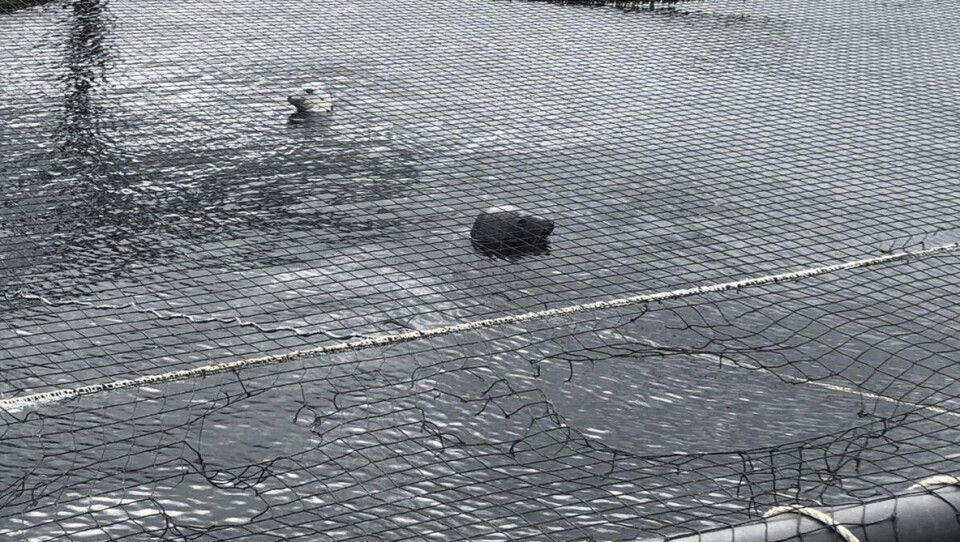
Salmon farmers call for talks with ministers as seal problem grows
Salmon farming trade organisation Salmon Scotland has urged Scottish Government ministers to sit down with sector leaders to talk about the problem of predation by seals.
The sector’s request was accompanied by figures showing that the number of farmed salmon killed by seals since the beginning of 2020 equates to lost revenue of more than £20 million for producers.
In the first eight months of this year, 347,917 salmon were killed directly by seals, taking the total since January 2020 to 864,360. With seal attacks peaking in the winter, the total is due to pass one million well before Christmas.

No easy fix
Tavish Scott, chief executive of Salmon Scotland (formerly the Scottish Salmon Producers’ Organisation), said: “There is no easy fix but we need a dialogue with ministers – and the leaders of other sectors affected – to find ways of tackling what has become an increasingly serious issue for our members.”
Seals are a protected species in Scotland and their numbers having been growing steadily, causing problems not just for salmon farmers but also wild salmon fisheries boards. The Scottish White Fish Producers’ Association also said seals were a threat to cod off the west coast.
No guns or ADDs
Until February this year, salmon farmers had dispensation to shoot seals as a last resort, but this power has been rescinded by the Scottish government because it jeopardised Scotland’s £180m salmon exports to the US, which plans to ban the trade from countries that kill seals to protect fisheries.
Acoustic deterrent devices (ADDs) have also been voluntarily taken out of use by fish farmers after claims that they caused distress to whales and dolphins and might contravene European wildlife protection legislation.
There are more sophisticated ADDs available, such as those supplied by Dundee-based Ace Aquatec. Its Acoustic Startle Response (ASR) device is triggered when a system of cameras, night vision and thermal imaging identifies an approaching predator. The system then directs short (3- to 10-millisecond) randomised pulses of sound that only a seal can hear, and which Ace Aquatec says creates a visceral response in mammals that cannot be overcome.
However, fish farmers are waiting for guidance from Marine Scotland about whether they can use them.
Proper dialogue
Scott said there was now a pressing need for a proper dialogue to find a way forward and wants all interested parties - including the caught fisheries sector and wild salmon interests - to get around a table for a “proper and mature dialogue”.
“Scotland’s seal population is growing all the time and many of their traditional sources of food are disappearing, partly because of fishing and partly because climate change is driving species further north,” said Scott.
“They are often hungry and desperate, and it is no surprise they do all they can to attack our farms and kill the fish inside the pens.”
Seal-resistant nets
All of Scotland’s salmon farmers have invested heavily in new seal-resistant nets but seals can climb up and over the walk-way barriers and also manage to attack salmon through the nets themselves.
The knock-on effects of a seal attack can be even more damaging than the attack itself. The remaining salmon go off their food and their immune systems are weakened, leaving them open to disease.
Scott said he was not asking for farmers to be allowed to shoot seals again but stressed: “We cannot forget the duty our farmers have to their fish. They have a responsibility to look after them, but they cannot do so if they are unable to stop seal attacks.”






















































